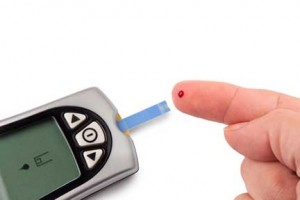How Diabetes Affects Your Feet | Foot Ulcers | Neuropathy in Allentown

The Impact of Diabetes On Your Feet
In a report released by the American Diabetes Association in 2011, it was stated that 25.8 million people, children and adults included, have some form of diabetes. That amounts to 8.3% of the U.S. population.
Foot problems are a big risk for diabetics, and unfortunately, frequently overlooked until symptoms arise. The price of ignoring the early effects of diabetes on your feet are ulcers, wounds that won’t heal, diabetic peripheral neuropathy, charcot foot disorder, and in extreme cases, amputation of a toe, foot, or leg. It’s very important that once diagnosed, you schedule regular visits with your podiatrist so they can create a baseline from which to monitor the health of your feet, ankles, and lower legs.
The greatest threats to the health of a diabetic’s feet are neuropathy and vascular damage. Once these systems cease to function properly, a cascade of problems arise.
- Neuropathy reduces your ability to feel pain or discomfort, which can lead to undetected injuries and fast moving infections
- Vascular damage reduces bloodflow, which impacts your body’s ability to heal and fight infection. The smallest cut or blister can become a massive, system wide infection very quickly.
Diabetics need to inspect their feet every day, looking for puncture wounds, bruises, redness, unusual warmth, blisters, ulcers, scratches, cuts and toenail problems. If you can’t see your feet, have someone help you, or use a mirror.
Diabetes-related Foot and Leg Problems
- Infections and ulcers (sores) that don’t heal. A diabetic foot ulcer is a sore on the skin that may reach all the way to the bone. Because of poor circulation and neuropathy in the feet, cuts or blisters can easily turn into ulcers that become infected and won’t heal. This is a common – and serious – complication of diabetes and can lead to a loss of your foot, your leg, or your life.
- Corns and calluses. When neuropathy is present, you may be unaware that your shoes are causing pressure and producing corns or calluses. Because of a diabetic’s inability to heal properly, corns and calluses must be properly treated or they can develop into ulcers.
- Dry, cracked skin. Poor circulation and neuropathy can make your skin dry. This may seem harmless, but dry skin can result in cracks that may become sores and lead to infection.
- Nail disorders. Ingrown toenails (which curve into the soft skin on the sides of the nail) and fungal infections of the toenails can go unnoticed because of loss of feeling. If they are not properly treated, they can become infected quickly.
- Hammertoes and bunions. Nerve damage affecting muscles can cause muscle weakness in the feet, resulting in hammertoes and bunions. Footwear rubbing against these deformities can quickly create ulcers.
- Charcot foot. This is a complex foot deformity which develops as a result of an undetected broken bone due to loss of sensation, leading to the collapse of the soft tissue of the foot. Because of neuropathy, the pain of the fracture goes unnoticed and the patient continues to walk on the broken bone, making it worse. This disabling complication is so severe that surgery, and occasionally amputation, may become necessary. Read more about Charcot foot here.
- Poor blood flow. In diabetes, vascular damage occurs and the blood vessels below the knee often become narrow, restricting blood flow. This prevents wounds from healing and may cause tissue death.
How we can help you
Scheduling regular foot checkups and seeking medical advice when you notice anything out of the ordinary can keep small problems from becoming much worse. Your foot and ankle surgeon has many tools at their disposal to help wounds heal and prevent infection.
When Is Amputation Necessary?
Even with preventative care and prompt treatment of infection and complications, there are instances when amputation is necessary to remove infected tissue, save a limb, or even save a life. We will take every measure possible to avoid this.
It all starts with you – the more proactive you are in maintaining your foot and ankle health, the less impact diabetes will have on your feet.
Please see our page on how to avoid foot and lower leg complications from diabetes.


